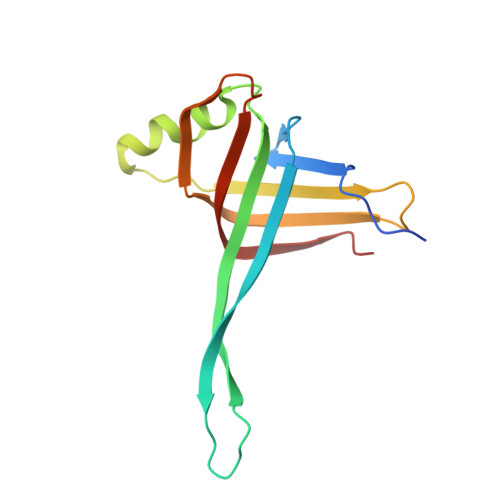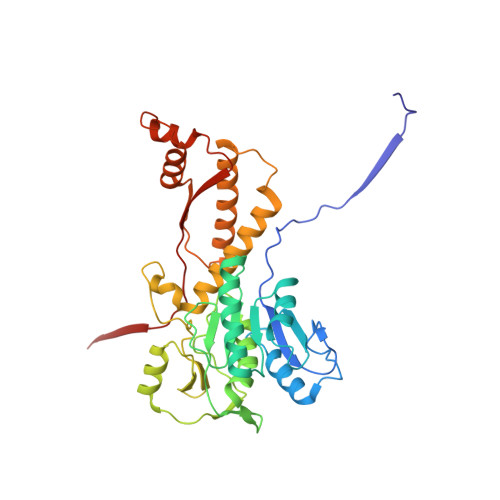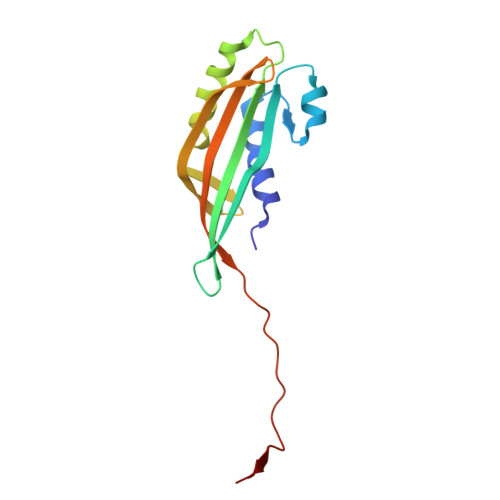Atomic structures of a bacteriocin targeting Gram-positive bacteria.
Cai, X., He, Y., Yu, I., Imani, A., Scholl, D., Miller, J.F., Zhou, Z.H.(2024) Nat Commun 15: 7057-7057
- PubMed: 39152109
- DOI: https://doi.org/10.1038/s41467-024-51038-w
- Primary Citation of Related Structures:
8V3T, 8V3W, 8V3X, 8V3Y, 8V3Z, 8V40, 8V41, 8V43 - PubMed Abstract:
Due to envelope differences between Gram-positive and Gram-negative bacteria, engineering precision bactericidal contractile nanomachines requires atomic-level understanding of their structures; however, only those killing Gram-negative bacteria are currently known. Here, we report the atomic structures of an engineered diffocin, a contractile syringe-like molecular machine that kills the Gram-positive bacterium Clostridioides difficile. Captured in one pre-contraction and two post-contraction states, each structure fashions six proteins in the bacteria-targeting baseplate, two proteins in the energy-storing trunk, and a collar linking the sheath with the membrane-penetrating tube. Compared to contractile machines targeting Gram-negative bacteria, major differences reside in the baseplate and contraction magnitude, consistent with target envelope differences. The multifunctional hub-hydrolase protein connects the tube and baseplate and is positioned to degrade peptidoglycan during penetration. The full-length tape measure protein forms a coiled-coil helix bundle homotrimer spanning the entire diffocin. Our study offers mechanical insights and principles for designing potent protein-based precision antibiotics.
Organizational Affiliation:
Department of Microbiology, Immunology and Molecular Genetics, University of California, Los Angeles (UCLA), Los Angeles, CA, USA.
















